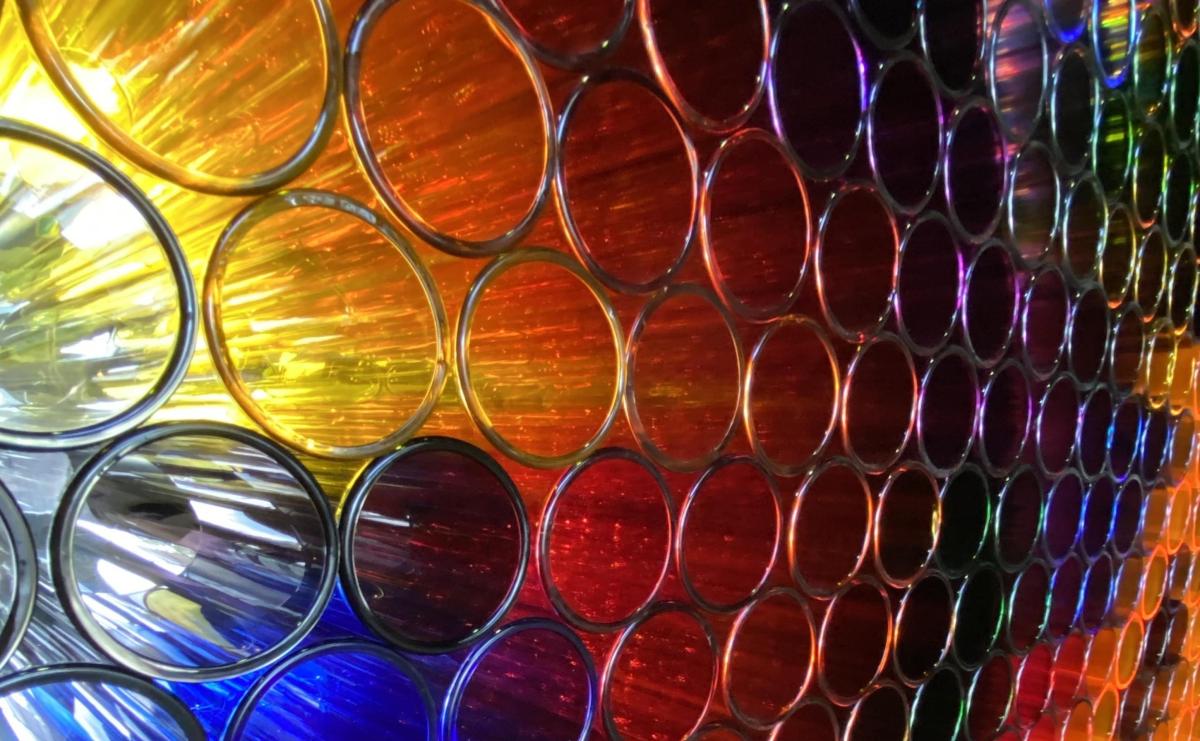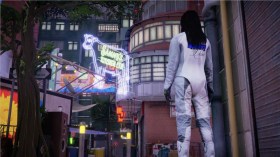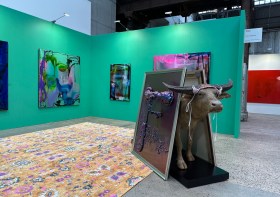When you stand in the Canberra Glassworks foyer in front of Scott Chaseling’s Sanctuary, a wall of coloured glass tubes glowing in the morning sunlight, you might ask, ‘Why the redemption of colour?’ It’s a fair question – we live in an age of neon lipsticks, vibrantly dyed hair, and fabrics in every colour under the sun. What about colour needs to be redeemed?
The answer, at least for this exhibition, is twofold. The first is a renewed statement about seeing art in person rather than through the blue light of a flat computer screen. Art spaces have had a contentious relationship with digital interaction for a while now, which has been emphasised by the effect of the pandemic, leading to the question, ‘Are digital exhibitions the end of physical art spaces?’
‘… the light shifts and melds the rainbow of colours together in new ways as you walk around the sculpture.’
Chaseling’s Redemption of Colour is a demonstration of why this is not the case, where each piece changes depending on the viewer’s perspective. Through Sanctuary, a piece originally made for the cancelled Sculpture by the Sea 2020, the light shifts and melds the rainbow of colours together in new ways as you walk around the sculpture, the edges of the tubes glowing at different intensities, from bright orange to tinted grey.
While the rest of the exhibition is lit with carefully placed spotlights, Sanctuary relies on natural light through the glass doors on either side of the foyer, and so is probably best seen during the morning or late afternoon when it best captures the sunlight.
Read: Exhibition Review: Adelaide//International, Samstag Museum of Art
Even in the mid-afternoon, though, you can see an image picked out in neon orange – a symbol whose origin and meaning Chaseling chooses to keep to himself. This little mystery hints at a playfulness within an artwork that otherwise takes its cues from religious artworks of stained glass and large industrial installations – unknown but not unknowable.
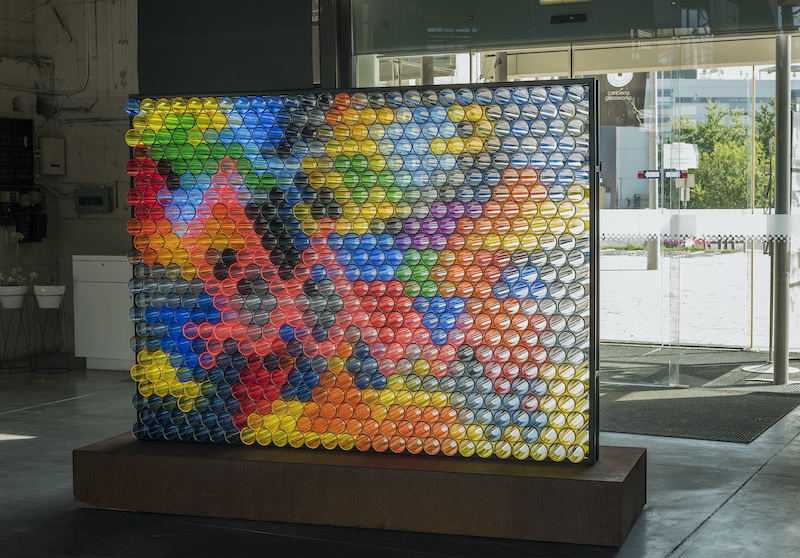
Scott Chaseling’s Sanctuary (2021), in Redemption of Colour exhibition at Canberra Glassworks. Photo: Supplied.
Walking into the main gallery, five artworks occupy the walls, and here the second meaning of the title becomes clear. If you are unfamiliar with Australian glass art, it may come as a surprise that it has a rather contentious relationship with colour. Soft blues, whites, greys, and browns dominate, pared down by textures and pulled out into mere tints.
Chaseling’s Black Flag is an example of this, made of tubes in opaque black and three translucent shades of grey. This focus on texture and form over colour has produced some incredible artworks and given Australian glass artists an international reputation for their skill at coldworking – engraving, sanding, and carving – but over time it has also become a form of cultural cringe for the medium.
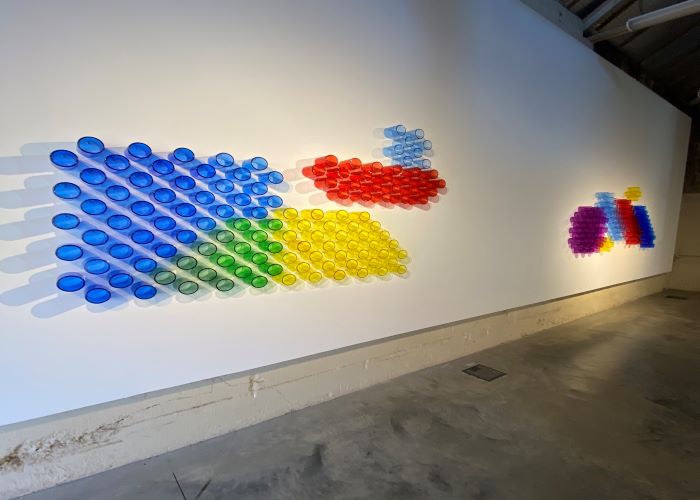
Scott Chaseling’s Ex Nihilo #1 and #2 (2021), in Redemption of Colour exhibition at Canberra Glassworks. Photo: Supplied.
The colours in Chaseling’s Ex Nihilo #1 and #2 are actually commercially applied paints (necessary for consistency of colour) but they match colours from the limited palette that glass blowers have available to them. Instead of hiding or subduing these colours, Chaseling celebrates them, the lighting casting shadows of colour from the tubes across the walls.
The other artworks, Halo #1 and #2, are made up of glass chains made in the hotshop of the Glassworks, and play with colour and texture without losing the fresh gloss of heat-formed glass that other artists are so keen to shed. It’s a challenge both to the world of Australian glass art and to the wider audience to reconsider how these bright, bold, ‘straight out of the paint tube’ colours bring joy and awe to art and life.
The final room of the exhibition is a mixed experience. The smokestack (a former industrial chimney turned art space) can be a difficult canvas to work with, and while the wooden structure that Chaseling has installed to display the five artworks within does more with the physicality of the space than simple plinths, it’s not entirely successful at the large-scale Cabinet of Curiosities effect it’s going for.
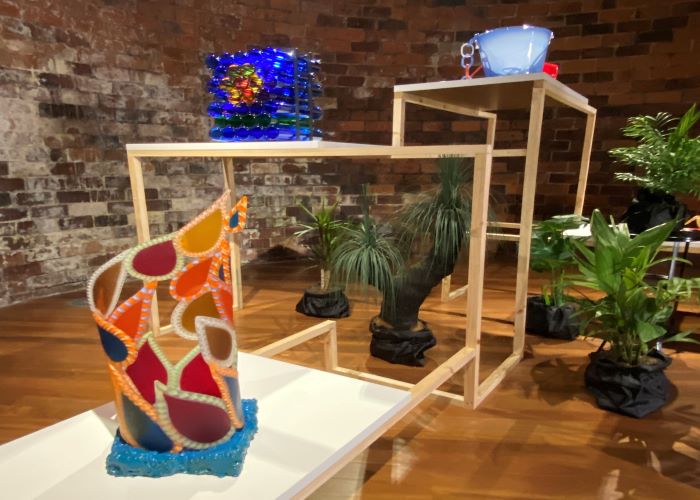
Scott Chaseling’s Redemption of Colour exhibition at Canberra Glassworks. Photo: Supplied.
The plants underneath and around the structure feel less ‘indoor jungle’ and more ‘misplaced house plants’, and although all of the artworks are individually interesting, the mixed-media artworks Speed and Spire seem disconnected from the rest of the exhibition.
‘Overall, The Redemption of Colour both addresses very specific questions of glass and colour in Australian art, and encourages a broader audience to immerse themselves in the joy of colour and light.’
However, the smokestack also contains two of the most captivating works in the exhibition: Window #1 and #2. Moreso even than the large foyer piece, these artworks capture the beauty and wonder of the stained glass windows that Chaseling took as inspiration, and in the spirit of needing to physically share space with artwork, photos do them no justice.
Overall, The Redemption of Colour both addresses very specific questions of glass and colour in Australian art, and encourages a broader audience to immerse themselves in the joy of colour and light. Whether other artists will take up the challenge Chaseling lays down is yet to be seen, but for an audience that has spent the last year seeing a grim reality through a computer screen, this celebration of colour in glass is a welcome contrast.
4 stars out of 5 ★★★★
Redemption of Colour
Artist: Scott Chaseling
Canberra Glassworks, ACT
14 January – 11 April 2021
